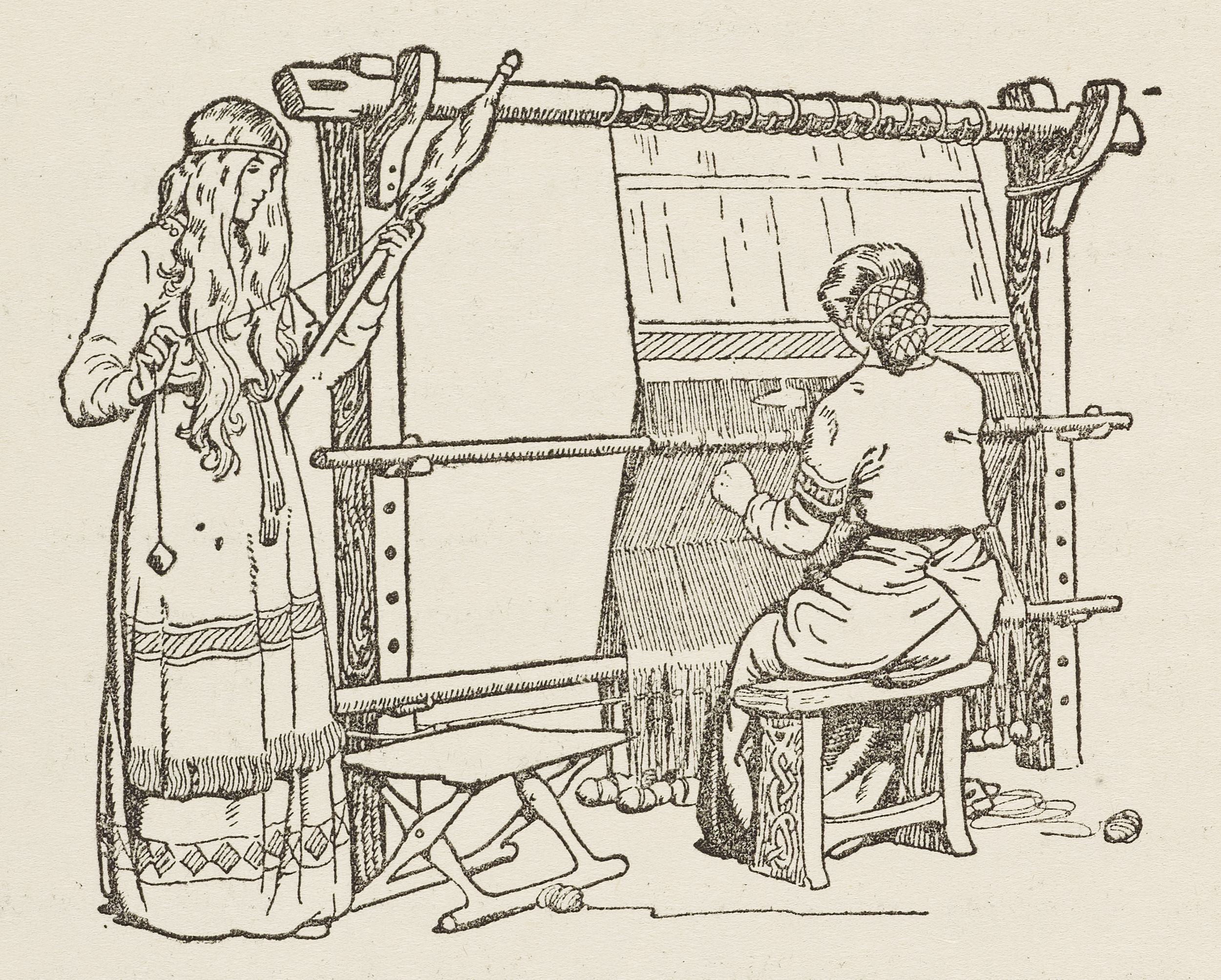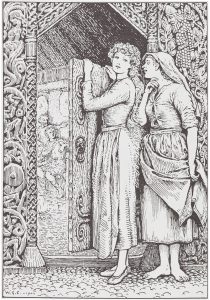
January 2, 2018, by Judith Jesch
Danelaw Saga: Bringing Vikings Back to the East Midlands – a student’s view
By Kayla Kemhadjian
The Danelaw Saga exhibition housed in the Weston Gallery at Nottingham Lakeside Arts may seem like a small addition to the Bringing Vikings Back to The East Midlands project. However, intricately weaved in a room which typically houses manuscripts is a wealth of information about how the Vikings shaped the East Midlands. While I did not grow up in the East Midlands, or in the UK for that matter, I found that the gallery deftly described the impact of the Vikings on the area with easy-to-read signs, as well as my personal favourite: various early maps of the area. This thoughtful inclusion allows one to pinpoint the exact spaces being talked about around the room, and given its cosy berth, it is not out of one’s way to go back and forth between the map and various artefacts.
The exhibit also includes information on the reimagining of the Viking era by increasingly modern artists and scholars. This addition was especially interesting to me as I study medievalisms (the modern appropriation of the medieval period) and an exhibit explicitly pointing to the impact of the Vikings on the modern age, not only through their actions and innovation, but also through the transmission of the very artefacts and stories we are studying, was a nice change. It allows the public, and me, to think of questions relating to their own interest in the period, where that stems from, and how what they expect to see in such an exhibition plays into the creation of it.
For  instance, in one of the cases which pays special interest to such a reimagining, Professor Christine Fell the first female head of the School of English is given attention. Having read some of her scholarship as part of my studies, yet having known nothing about her, this addition gave me a sense of belonging that is typically reserved for classes or art. Moreover, the inclusion of and interest in women, both from the Viking Age and the modern, allows other women who are interested in the period like myself to see themselves studying it, or become otherwise involved. This narrative is not the typical Viking story of rape and pillaging in the name of being heathen, which the layman who has only learned of a ‘viking’ through modern media seems to think of when we say the term. However, I think those that are interested enough to enter the Weston Gallery will gain a greater understanding of the age and what it inspires. They certainly would have more of a rounded understanding of what it is I do when I tell them I am on the MA Viking and Anglo-Saxon studies course. Suffice to say, I would call Danelaw Saga a success.
instance, in one of the cases which pays special interest to such a reimagining, Professor Christine Fell the first female head of the School of English is given attention. Having read some of her scholarship as part of my studies, yet having known nothing about her, this addition gave me a sense of belonging that is typically reserved for classes or art. Moreover, the inclusion of and interest in women, both from the Viking Age and the modern, allows other women who are interested in the period like myself to see themselves studying it, or become otherwise involved. This narrative is not the typical Viking story of rape and pillaging in the name of being heathen, which the layman who has only learned of a ‘viking’ through modern media seems to think of when we say the term. However, I think those that are interested enough to enter the Weston Gallery will gain a greater understanding of the age and what it inspires. They certainly would have more of a rounded understanding of what it is I do when I tell them I am on the MA Viking and Anglo-Saxon studies course. Suffice to say, I would call Danelaw Saga a success.
No comments yet, fill out a comment to be the first

Leave a Reply